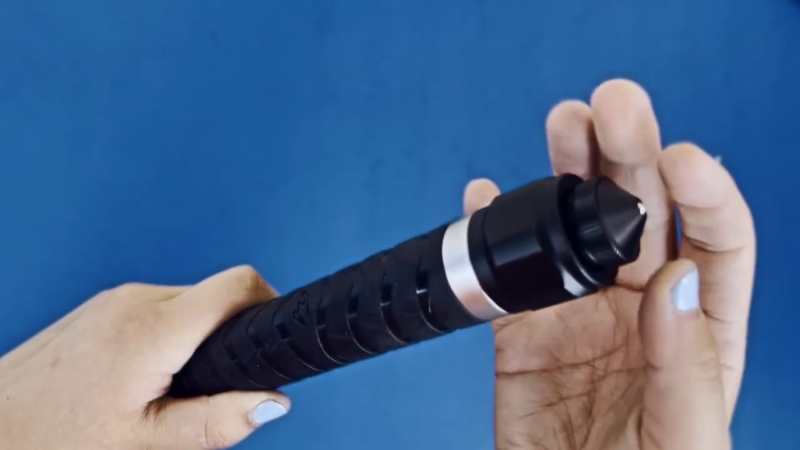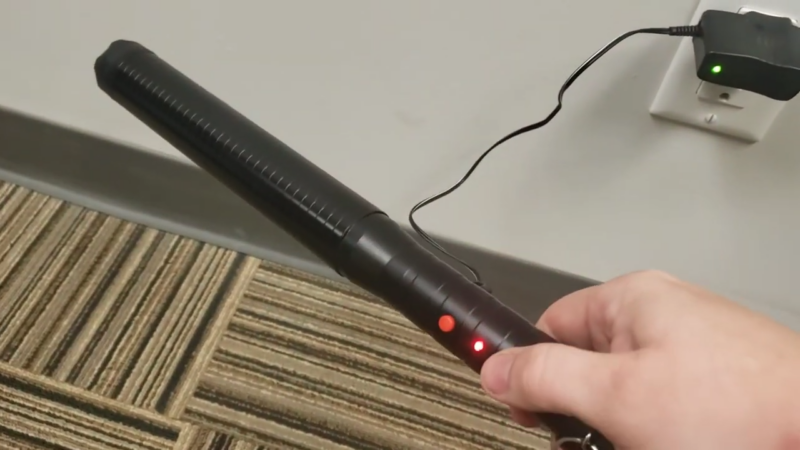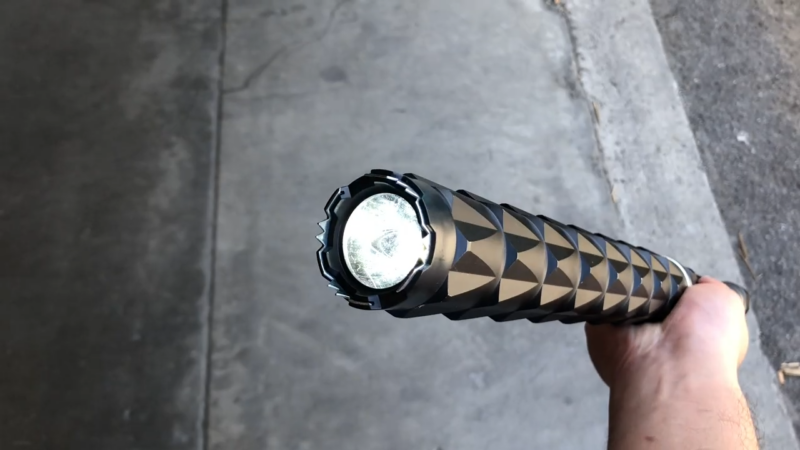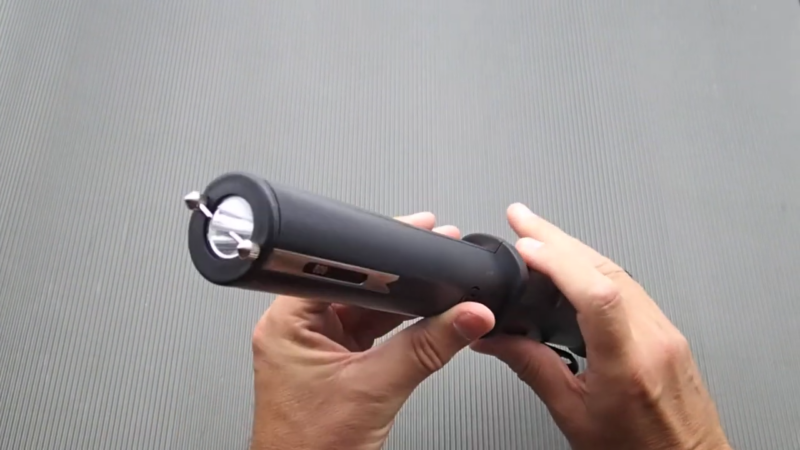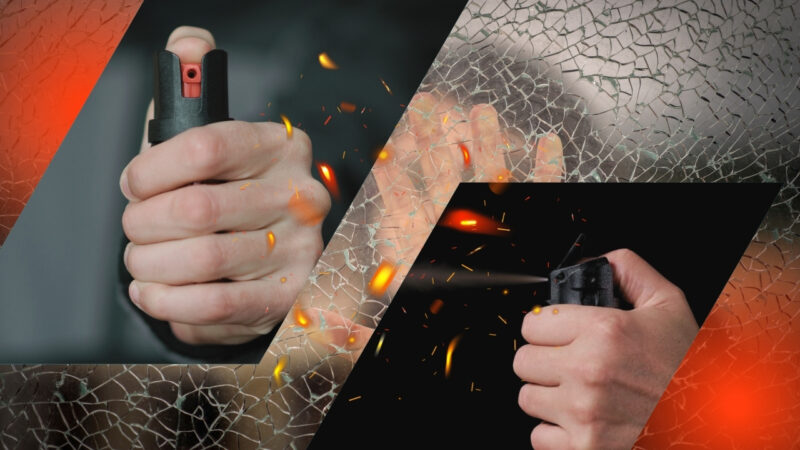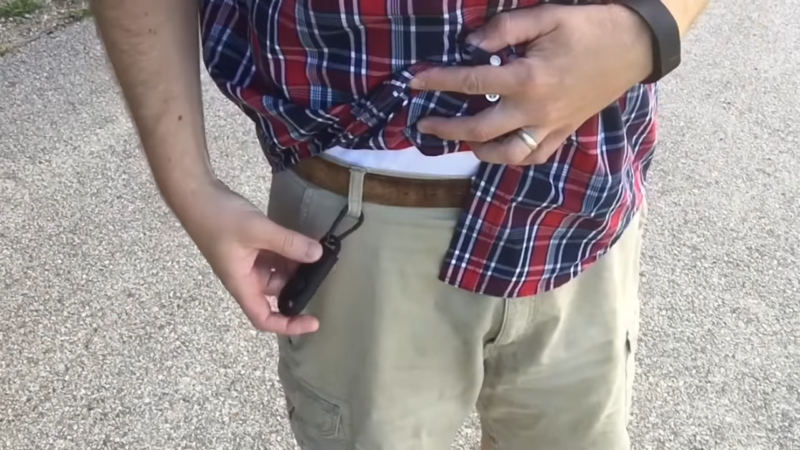When faced with the question of how to effectively defend oneself in precarious situations, it’s crucial to consider reliable non-lethal tools.
Among these tools, the stun baton stands out for its versatility and efficacy.
A stun baton offers a means of both incapacitating an assailant and maintaining a safe distance, reducing the risk of close-quarter encounters.
Stun batons come with various features that enhance their utility in self-defense scenarios.
For instance, options like the Police Force Tactical 13.5″ LED Stun Gun Baton pack a powerful 12 million volts of electricity and include a tactical flashlight, making them suitable for different environments and situations.
With robust construction materials like military-grade aluminum alloy, these devices are both durable and effective.
Efficacy of Stun Batons for Self-Defense
Stopping Power
When activated, it delivers a high-voltage, low-amperage electric shock that disrupts the attacker’s neuromuscular system. This effect generally causes immediate disorientation and loss of muscle control, giving the user valuable time to escape or call for help.
The dual function of the stun baton means it can be used both as a conventional striking weapon and as an electrical deterrent. Most modern stun batons also include a loud electric crackling noise when activated, which can act as a psychological deterrent before physical contact is even made.
Impact on Assailants
The high-voltage shock interferes with the body’s communication between the brain and muscles, leading to loss of balance and muscle control. This incapacitation typically lasts for several minutes, depending on the duration of the shock and the physical condition of the attacker.
Stun batons are effective under various conditions, including through clothing, making them versatile in real-world scenarios. They provide a non-lethal option for self-defense, reducing the risk of fatal encounters while still providing effective protection against an aggressor.
Advantages of Using a Stun Baton
Range of Defense
With lengths ranging from 13.5 inches to over 20 inches, users can maintain a safer distance compared to traditional stun guns. This physical barrier reduces the likelihood of close-quarters encounters.
The extended length allows users to defend themselves effectively without having to make direct contact. This feature gives the user an edge, providing extra time to react and escape from potential danger.
Many stun batons are also equipped with a flashlight function, adding another layer of utility. In low-light situations, this feature can help the user identify threats from a distance, making it a practical addition to the weapon.
Non-Lethal Nature
Stun batons are designed to incapacitate rather than kill, which can be a significant consideration for those concerned with using lethal force. They deliver high-voltage electrical shocks that disrupt muscle control, causing the attacker to become temporarily immobilized.
With voltages ranging from 12 million to 110 million volts, the electrical shock is powerful enough to deter most attackers. The non-lethal nature of stun batons makes them a preferred option for those who seek effective self-defense without the moral and legal complications of lethal weapons.
Ease of Use
Stun batons are generally straightforward to use, making them accessible even for those without extensive self-defense training. Most models feature an easy-to-press button to activate the shock, requiring minimal physical strength or skill to operate.
The ergonomic design of many stun batons ensures a comfortable grip, reducing the risk of fumbling during a high-stress situation. Lightweight materials, such as military-grade aluminum alloy, further enhance usability by making the baton easier to carry and maneuver.
The combination of intuitive controls and user-friendly design makes stun batons practical and efficient for most people. This accessibility ensures that individuals can protect themselves effectively when confronted with a threat.
Operational Mechanism
When activated, the device discharges electricity through metal prongs at the tip. This causes intense, temporary muscle contractions and pain, effectively stopping most attackers.
Most models feature an activation button that must be pressed to deliver the shock. Some include a safety switch to prevent accidental discharge. The effectiveness depends on the voltage and amperage, with many modern stun batons offering millions of volts. These tools are designed to subdue without causing long-term harm.
Design and Features
Many models are constructed from military-grade aluminum alloy, ensuring durability. Lengths can range from compact 13.5-inch versions to larger models.
Additional features may include built-in flashlights with high-lumen outputs, offering both visibility and further intimidation. Wrist straps and holster holders provide secure and convenient carrying options. By integrating multiple self-defense elements, these tools are versatile and practical for various situations.
Regulations and Restrictions
These devices are often classified under weapons laws, which means they can have restrictions similar to those for firearms. For example, some states require permits for carrying a stun baton openly or concealed.
Federal regulations primarily leave the decision to individual states, so it is important to research local laws before purchasing. Some states also have age restrictions, typically requiring users to be over 18.
Illegal use of stun batons can result in significant legal consequences, including fines and imprisonment. Misuse, such as carrying a stun baton into a restricted area like a school or government building, can also lead to criminal charges.
State-Specific Laws
In California, for instance, expandable batons are illegal to own or carry. Meanwhile, states like Texas and Florida allow possession with fewer restrictions, though users must adhere to specific guidelines.
New York has stringent laws, often classifying stun batons under the same regulations as more lethal weapons. Residents must be cautious and ensure they meet all legal requirements before carrying one.
Massachusetts and New Jersey require permits for stun batons, emphasizing the need for documentation and even safety training. Legal nuances can be significant, so consulting local law enforcement or legal experts is advisable when unsure about specific state regulations.
Best Practices for Stun Baton Use
Training and Preparedness
Certified instructors can provide hands-on training and simulate real-life scenarios.
Regular practice helps you become adept at swift deployment. Knowing how to carry and access the baton swiftly can make a significant difference in urgent situations. Techniques such as aiming for the attacker’s torso or upper thighs maximize the device’s effectiveness.
Video tutorials also serve as supplementary educational resources.
Proper Storage and Maintenance
It should be kept in a secure, easily accessible location, away from children and unauthorized individuals. A holster can be useful for mobility and quick access.
Regular maintenance is essential. Checking the battery status and ensuring the device is charged can prevent malfunctions. Users should clean the baton periodically to avoid any buildup of dirt or debris that might affect its performance.
Assessment of Situations
Not every confrontation warrants its use. The tool should be a last resort in scenarios where physical harm is imminent.
Understanding body language and environmental cues helps in making the right decision. In low-risk situations, verbal de-escalation should be attempted first.
Awareness of local laws and regulations regarding stun batons is also important. This knowledge ensures that users stay compliant and avoid any legal consequences related to improper use of the device.
Alternatives to Stun Batons
Pepper Sprays and Maces
Pepper sprays and maces are widely used for self-defense due to their ease of use and effectiveness in incapacitating attackers. They contain oleoresin capsicum (OC), a compound that causes severe irritation to the eyes, skin, and respiratory system. The immediate impact includes temporary blindness, difficulty breathing, and intense burning sensations.
These devices are compact and easily carried in a purse or pocket. Many also feature keychain attachments for quick access. When using pepper sprays or maces, it is important to aim for the attacker’s face and eyes to maximize their debilitating effects. In self-defense situations, the ability to create distance is crucial, and these sprays provide that advantage.
Tactical Flashlights
Tactical flashlights serve dual purposes as illumination tools and self-defense weapons. They are typically constructed from durable materials such as aircraft-grade aluminum and often feature serrated bezels for striking. The intense light output, often exceeding 1000 lumens, can momentarily blind and disorient an attacker, providing a critical opportunity to escape.
Apart from their physical durability, many tactical flashlights include strobe light functions. This feature rapidly flashes light, disorienting, and confusing potential threats.
Additionally, these devices are compact and portable, making them suitable for everyday carry (EDC). Unlike other self-defense tools, tactical flashlights can be openly carried without raising suspicion, thus providing a discreet means of protection.
Personal Alarms
Personal alarms are designed to emit a loud, ear-piercing sound when activated. These devices are intended to draw attention and deter attackers by attracting bystanders or authorities to the scene. The alarm’s noise level typically ranges from 100 to 130 decibels, similar to the volume of a jet engine at takeoff.
Personal alarms are small and lightweight, easily attachable to bags, belts, or keychains. Activation usually involves pulling a pin or pressing a button, ensuring quick and simple use in emergencies.
The primary advantage lies in their ability to create a psychological barrier, as attackers often fear drawing attention. While not physically defensive, personal alarms are effective in preventing and mitigating threats through loud, disruptive sounds.



